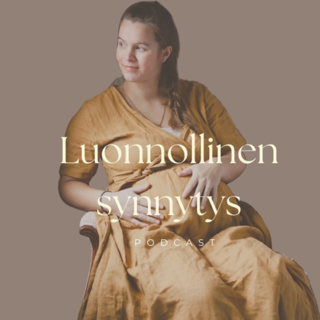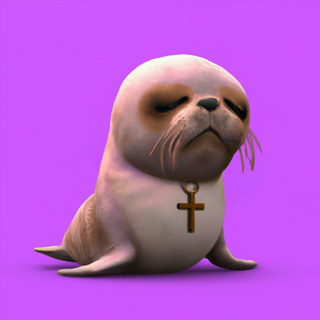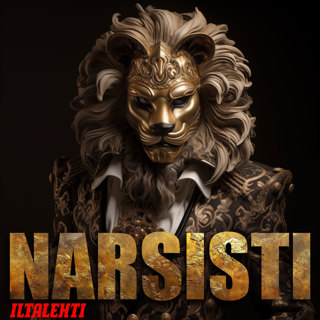
197 - Giovanni of the Black Bands part II - The invincible very naughty boy
Episode SummaryPicking up where we left off, Giovanni de’ Medici, son of Caterina Sforza and known to history as Giovanni of the Black Bands, continues his meteoric rise through the bloody and chaotic world of Renaissance warfare. Backed by a Medici pope and driven by his fierce loyalty to his men, Giovanni’s legend as a mercenary commander — and his troubles with the powerful Medici family — only grow.Host Mike Corradi unpacks the dangerous charisma, discipline, and contradictions of this larger-than-life condottiero: a man both feared and admired, ruthless yet loyal, reckless yet revered. From duels and executions to daring river crossings and political intrigue, this episode captures Giovanni at the height of his brutal glory.What You’ll Hear in This EpisodeFrom Soldier to Legend – How Giovanni built the feared and disciplined Black Bands, and the tough standards that made them famous.Mercenary Life in Renaissance Italy – The realities of the “condotta” contract system, pay, discipline, and the fine line between soldiers and extortionists.A Code of Blood and Brotherhood – Giovanni’s uncompromising justice, personal duels, and brutal loyalty to his men.Exile and Recklessness – The duel with Camillo d’Appiano, murders in Florence, and yet another banishment for the restless Medici captain.Back to War – Giovanni’s return to papal service, his victories in the Marche, and the death of Pope Leo X — when his men finally took the name The Black Bands.The Battle of Vaprio (1521) – A daring river crossing, a sleeping French commander, and a crucial victory that spared Milan from destruction.Family and Bloodlines Again – Giovanni’s rescue of his stepsister Bianca Riario, echoing his mother Caterina’s courage.A New Companion – The arrival of Pietro Aretino, the scandalous writer and provocateur, whose influence on Giovanni we’ll soon discover.Key FiguresGiovanni de’ Medici “of the Black Bands” – The fearless condottiero whose name became a legend.Pope Leo X (Giovanni de’ Medici) – The Medici pope whose death marked a turning point for Giovanni’s army.Maria Salviati – Giovanni’s long-suffering wife, holding the family together in his absence.Prospero Colonna – The respected general under whom Giovanni fought, and a link to the fall of Cesare Borgia.Bianca Riario – Giovanni’s stepsister and loyal supporter, mirroring their mother’s fierce independence.Pietro Aretino – The notorious writer and satirist soon to become Giovanni’s newest and most scandalous ally.Highlights & InsightsThe discipline and image of the Black Bands as a symbol of military professionalism.Giovanni’s ruthless moral code: loyalty rewarded, betrayal punished — often fatally.The economic and moral contradictions of the condottieri trade.How personal honour and vendetta shaped early 16th-century warfare.The seeds of change as firearms began to replace the medieval knight.Closing ThoughtAs Giovanni’s fame and ferocity spread across Italy, his world teeters between the medieval and the modern — where mercenary loyalty, family honour, and the politics of popes collide.But with the arrival of a new friend — and bad influence — in Pietro Aretino, Giovanni’s story is about to take an even darker and more dangerous...
11 Marras 14min

Call for contributions: episode 200 and 8th anniversary
Hello You! for our 220th and 8th anniversary episode I thought I would invite contributions from the most VIP I could think of... YOU!So please send in a sound file or, if you don't feel like it, written message with a contribution, consideration, question, something i didn't mention or talk about enough.Please send by 31st December at the very latest.
1 Marras 1min

196 - Giovanni of the Black Bands part 1: birth of a legend
In this episode, we reunite with an old friend of the show — Caterina Sforza, the indomitable “Tigress of Forlì.” From her, we follow the turbulent and violent early life of her son, Giovanni de’ Medici, known as Il Gran Diavolo — the Great Devil — a man whose passions, battles, and excesses would shape the future of both the Sforza and Medicidynasties.We go through the tangled lineage and fiery temperament of one of Renaissance Italy’s most fascinating figures, tracing his path from rebellious youth to feared mercenary captain — and father to the first Grand Duke of Tuscany.What You’ll Hear in This EpisodeThe Birth of “Il Gran Diavolo” (1498) – Giovanni’s birth to Caterina Sforza and Giovanni “Il Popolano” de’ Medici, and the prophetic words that would define his life.A Child of Chaos – His mother’s imprisonment by Cesare Borgia, his custody battles, and his violent childhood in Florence.Love, Blood, and Family Ties – The marriage to Maria Salviati uniting two Medici branches, and the domestic discord that followed.A Life of War and Vice – Duels, brothel fights, noble feuds, and the infamous bridge incident with the Orsini family.From Rogue to Commander – His rise through the papal ranks, battlefield heroics, and growing legend as a fearless condottiero.The Birth of Cosimo de’ Medici (1519) – The long-awaited heir who would one day found the Grand Duchy of Tuscany, born amid firelight celebrations across Italy.Key FiguresCaterina Sforza – The formidable mother whose courage and intellect defined Giovanni’s heritage.Giovanni de’ Medici “Il Popolano” – His father, from a cadet branch of the Medici family.Maria Salviati – His loyal but neglected wife.Giovanni della Stufa – The inseparable and scandalous companion.Pope Leo X – Patron, relative, and pivotal figure in Giovanni’s military career.Cosimo de’ Medici – The son who would carry the Medici name to new heights.Closing ThoughtFrom Caterina’s fierce independence to Giovanni’s reckless courage, this episode explores how blood, loyalty, and ambition intertwined in the crucible of Renaissance Italy — giving rise to a new generation destined to rule.
21 Loka 17min

195 - Italian Wars 12 - The sack of Rome (again) and the end of the Sforza (1526 - 1530)
In this episode, we pick up with Emperor Charles V consolidating his power over Italy after the Battle of Pavia (1525), where the French king Francis I was captured. The uneasy Italian states, including Pope Clement VII (Giulio de’ Medici), soon realized they had traded one master for another and formed the League of Cognac (1526) — an anti-imperial alliance including France, Venice, Florence, the Papal States, Milan, and under English protection, Henry VIII.The league’s formation was steeped in intrigue, false pretenses, and even secret dealings with the Turks. One of Charles’s own commanders, the Marquis of Pescara, pretended to side with the league while feeding the emperor inside information.Meanwhile, Giovanni dalle Bande Nere, the famed mercenary from the Medici-Sforza line, met his end in battle, struck by artillery supplied by the duplicitous Duke of Ferrara. His death marked the fading of Italy’s old mercenary tradition — and one of its most charismatic figures.When the pope attempted to back away from the alliance, Charles’s allies struck at Rome. The Sack of Rome (1527)followed — a devastating episode where mutinous Landsknechts, many of them fervent Lutherans, unleashed horrific violence on the city. For days, the Eternal City was ravaged: thousands slaughtered, churches desecrated, art looted, and the Renaissance dream in Rome brutally extinguished. Pope Clement VII barely escaped to Castel Sant’Angelo, thanks to the sacrifice of his Swiss Guards.In the chaos that followed, the Papal States collapsed, local lords reclaimed their territories, and the Medici were expelled from Florence, where a new republic was declared — with Jesus Christ symbolically named as its king.Ultimately, Charles V and Clement VII reconciled. Political realism won out over ideology. Through the Treaties of Barcelona (1529) and Bologna (1530), the Italian Wars entered a quieter phase, and imperial dominance over Italy was secured.We close with the final chapter of the Sforza dynasty: Francesco II Sforza, the last Duke of Milan, whose death in 1535marked the end of an era — from the rise of the free communes to the age of dynastic rule and foreign domination.
7 Loka 18min

194 - The Italian Wars 11 - Medici pope to Medici pope - Battle of Pavia and Cognac
After three episodes exploring the life of Leonardo da Vinci, we return to the turbulent stage of the Italian Wars. In this episode, we pick up in the early 1520s, a period shaped by papal politics, dynastic rivalries, and the shifting fortunes of France and Spain.Highlights include:The succession of popes after Leo X: Hadrian VI and Clement VII, and their struggles with reform, neutrality, and survival.The tug-of-war between France and Spain over Milan and Naples, with Spain ultimately gaining the upper hand.The dramatic Battle of Pavia (1525) — where Francis I of France was captured, changing the balance of power in Italy.Local legend and culinary history: the devil’s bridge of Pavia and the birth of zuppa alla pavese.The curious origin of the word lapalisiano (and its English cousin lapalissade), born from the death of French commander Jacques de La Palice.The rise of the League of Cognac (1526), a desperate coalition including France, the Papacy, Florence, and Venice against Charles V’s growing dominance.Along the way, we balance high politics with folklore, language quirks, and even a recipe or two — showing how wars, words, and food can be unexpectedly intertwined.
16 Syys 16min

What has the printing press ever done for us? - Guest episode by the History of the Germans
This is a guest episode by Dirk Hoffmann of the history of the German podcast, in which he tells us all about the impact of one of the most important inventions in human history, Gutenberg printing press.
2 Syys 38min

193 - Leonardo Da Vinci part 3 - twilight and legacy
We explore the fascinating intersection between one of the world’s most famous relics and one of its most brilliant minds: Leonardo Da Vinci and the Shroud of Turin. Was Da Vinci somehow connected to this mysterious cloth? Could he have had the knowledge, access, and motive?🕯️ What You’ll Hear:The scientific investigation into the Shroud of Turin by the STURP team in 1978 and why their results only deepened the mystery.The carbon dating shock: how the Shroud was traced back not to 1st century Jerusalem, but medieval Europe.The curious photographic qualities of the Shroud and the theories involving camera obscura and silver sulphate.The intriguing possibility that Leonardo Da Vinci had the knowledge and opportunity to create such a sophisticated hoax.A dive into Leonardo’s Milan years: his commissions, his pupils (including the infamous Salaì), and unfinished masterpieces.The story behind The Last Supper, Vitruvian Man, and Leonardo’s move to the French court under Francis I.Reflections on Leonardo’s final years and his legacy as a polymath, artist, engineer, and relentless thinker.📍Locations & Highlights:Milan – Leonardo’s court years and commissions under Ludovico Sforza.Kraków – Home to the portrait of Cecilia Gallerani, Lady with an Ermine.Rome, Florence, Amboise – Key stages of Leonardo’s later life.🔍 Big Questions:Could Da Vinci have created the Shroud?What does the Vitruvian Man really represent?Was Salaì the inspiration behind some of Leonardo’s most enigmatic figures?
29 Heinä 20min





















